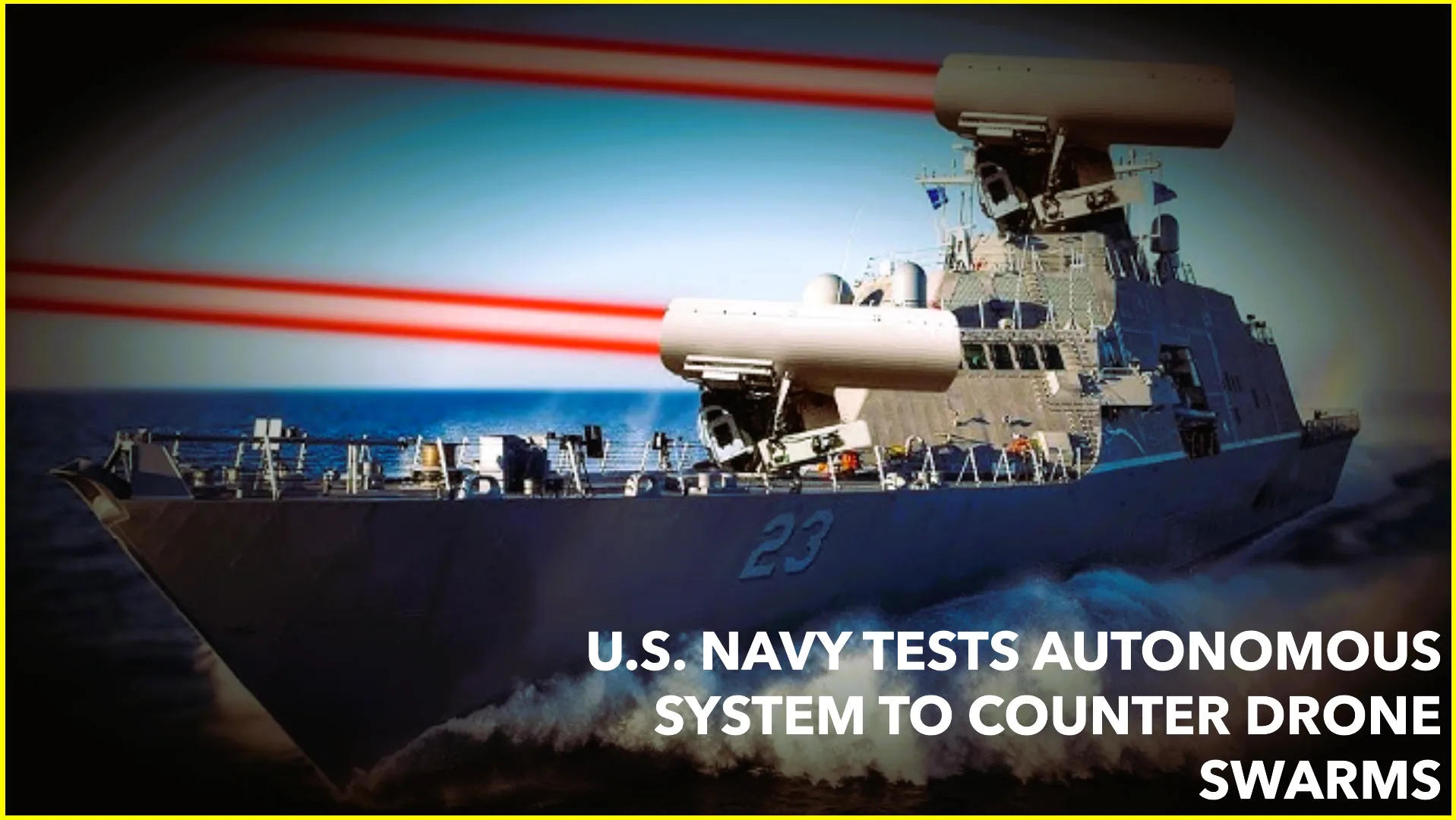The United States Navy is advancing its defense capabilities with the development of an artificial intelligence (AI)-enabled laser weapon system designed to autonomously counter drone swarm threats. This cutting-edge technology is being developed in collaboration with researchers from the Naval Postgraduate School and industry partners, aiming to enhance the Navy’s ability to neutralize evolving aerial threats.
The proliferation of drone swarms has become a significant concern for military forces worldwide, as these coordinated groups of unmanned aerial vehicles (UAVs) can overwhelm traditional defense systems. To address this challenge, the Navy’s AI-enabled laser system is designed to identify, track, and engage multiple drones simultaneously, reducing human intervention and improving response times.
At the core of this advanced weapon system is an AI model trained on extensive image datasets. By analyzing vast amounts of visual data, the AI can accurately classify various drone types and pinpoint their most vulnerable areas. This precise targeting capability ensures that the laser system delivers maximum damage with minimal energy consumption, making it both effective and efficient.
The laser weapon operates by emitting a concentrated beam of energy that can disable or destroy drones upon impact. Unlike conventional missile-based systems, laser weapons offer several advantages, including lower operational costs, unlimited ammunition as long as power is available, and rapid engagement of multiple targets. By integrating AI, the system can independently assess and prioritize threats, ensuring swift action without relying on constant human oversight.
Field testing of the AI-powered laser system is currently underway to evaluate its performance in real-world scenarios. These tests aim to refine the system’s ability to detect and engage drone swarms under various conditions, including different weather patterns, flight speeds, and swarm formations. The successful integration of this technology into the Navy’s existing defense infrastructure will significantly enhance its ability to protect naval assets from evolving aerial threats.
This innovation represents a major milestone in modern warfare, as autonomous systems become increasingly essential for maintaining national security. By leveraging AI, the U.S. Navy is not only improving its defensive capabilities but also paving the way for future advancements in military technology. The development of this laser weapon system underscores the growing importance of AI in enhancing both the efficiency and effectiveness of defense operations.
In addition to countering drone swarms, the AI-enabled laser system has the potential to address other threats, such as missiles, aircraft, and small boats. Its versatility and adaptability make it a valuable asset in a wide range of combat scenarios. Furthermore, the system’s autonomous capabilities reduce the cognitive load on human operators, allowing them to focus on strategic decision-making rather than manual targeting.
As the U.S. Navy continues to refine and expand the capabilities of this AI-powered laser weapon, it is expected to play a crucial role in future naval operations. The integration of AI and directed energy weapons represents a paradigm shift in military technology, offering faster, more precise, and cost-effective solutions to modern security challenges.
The successful deployment of this system will not only strengthen the Navy’s defensive capabilities but also serve as a deterrent against potential adversaries. By demonstrating its ability to neutralize drone swarms and other aerial threats, the U.S. Navy is reinforcing its commitment to maintaining maritime superiority in an increasingly complex and contested operational environment.










